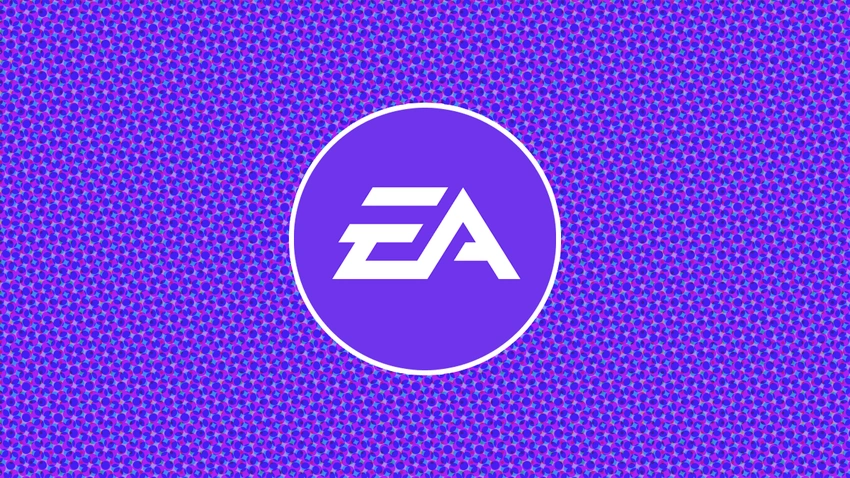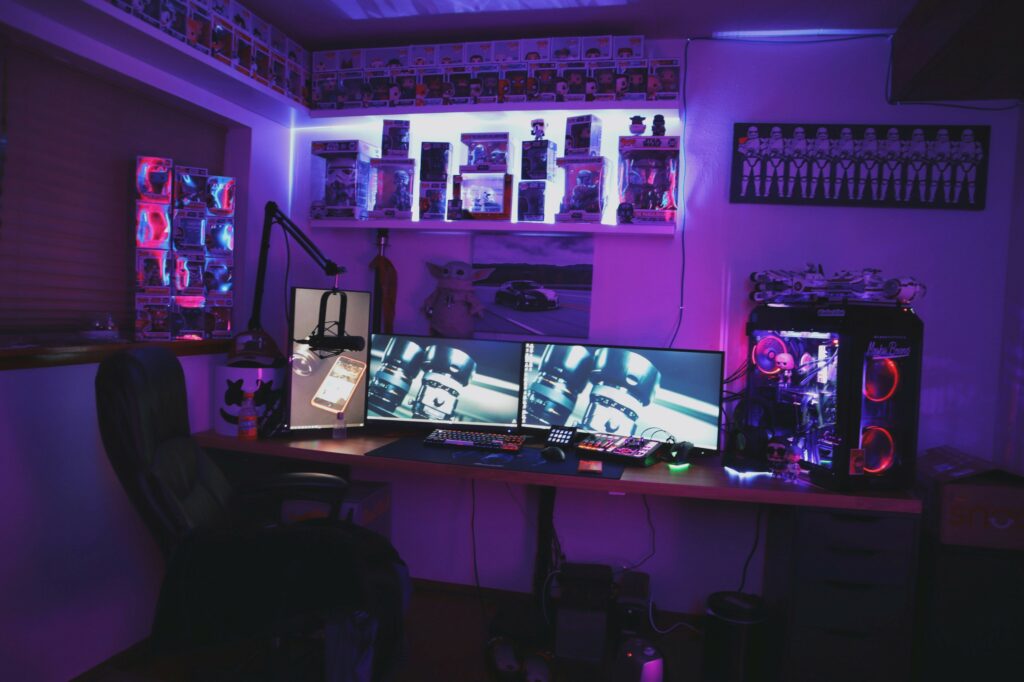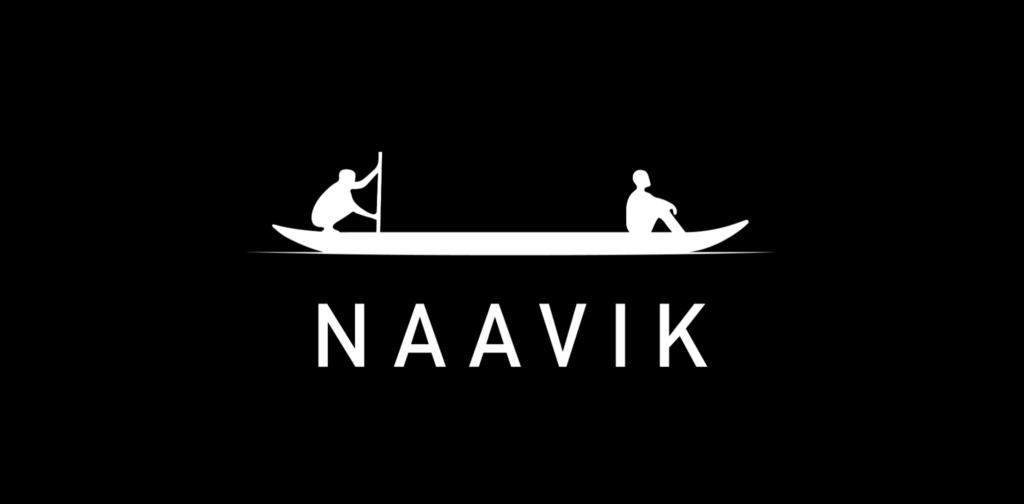Hi everyone — welcome to another issue of Naavik Digest. If you missed our last one, be sure to check out our coverage of Square Enix’s Q1 FY2024 earnings. In this issue, we’re reviewing Unity’s generative AI ambitions and discussing how the company’s early embrace of the technology could be an advantage.

We're also excited to announce that Naavik will be attending this year's Gamescom later this month. Naavik Co-founder Abhimanyu Kumar and Consulting Partner Jordan Phang will be in Cologne, Germany on August 23rd (Day 1) and available to discuss consulting relationships, content contributions, Naavik's new Open Gaming Research Initiative, and new team additions. They'll also be free if you just want to catch up and hear what Naavik has been up to lately. Submit a meeting request by clicking on the link below, and we look forward to seeing you at the business area!
The Future of Avatars

As virtual worlds become more immersive and widespread, how we all represent ourselves — via avatars — becomes all the more important. That’s why Naavik co-founder Aaron Bush sat down with Genies founder and CEO Akash Nigam to discuss the future of avatars and Genies’ rising role in it. The two of them discuss Genies’ history and focus, why XR will unleash a new wave of avatar use cases, what avatar ecosystems will ultimately look like, what the games industry underrates regarding avatars, and how the team is looking to kickstart avatar interoperability.
As always, you can find the Naavik Gaming Podcast on YouTube, Spotify, Apple Podcasts, Google Podcasts, our website, or anywhere else you listen to podcasts. Also, remember to shoot us any questions here.
#1 Unity's Bet on AI
By Matt Dion, Naavik Contributor

In the rush to come to grips with the generative AI hype cycle capturing the attention of both the venture and public markets, most large gaming companies have been hesitant to take a stance. While many have taken a wait-and-see approach, and some have opted to tap the brakes on the use of AI, one company has stood out for its early embrace of these new technologies: Unity Software.
The game engine maker drew headlines recently when it announced a series of updates aimed at putting generative AI tools in the hands of creators. These updates can be roughly bucketed into the following three initiatives:
- Unity Sentis: a service that allows developers to utilize Unity Runtime to deliver on-device AI model inference and deploy neural networks without concern for cloud computing costs or latency.
- Unity Muse: a suite of tools aimed at accelerating creation of real-time 3D content, the first of which is called Muse Chat, a natural language prompting tool designed to reduce troubleshooting and increase access to information.
- AI Marketplace: a dedicated section of the Unity Asset Store that “features curated solutions to accelerate AI-driven game development and gameplay enhancements.” Prominent examples include offerings from Inworld AI, Layer, and Modl.ai, among many others.
In the company’s Q1 earnings report earlier this year, Unity used these initiatives to put the AI narrative front and center for investors and customers alike. The Q1 Shareholder Letter dedicated an entire section to the topic, entitled “Gen-AI: Tailwind to Unity,” in which the company outlined how AI tools underpinned every part of its business. This included all three of the initiatives above, as well as the now fully acquired ironSource, which Unity said would transition its ads network “to the more advanced Unity ML/AI model,” and its access to vast swathes of proprietary model training data.
Despite the company’s forceful statements and continued emphasis that it has been working on AI for several years already, the latest initiatives remain a work-in-progress. Both Sentis and Muse are in beta for now, with the company expected to expand availability and announce pricing for the products in the coming quarters. The AI Marketplace got off to a rockier start, after Unity had to remove an AI-driven asset creation tool Atlas, just one day after it launched, citing a violation of terms and conditions. While the specifics behind the removal are unclear (though there are concerns Atlas improperly used models from Sketchfab), questions still remain about how Unity is verifying solutions and even how it is applying large language models (LLMs) in its own tools.
For its part, Unity subjects third-party solutions to its own Verified Solutions process, though its website offers little information on how that verification is conducted. Game developers have been miffed by the company’s relatively opaque announcements regarding Muse specifically, with Unity only offering that it “licensed third-party LLMs” to create Muse Chat. That tidbit of information is of little solace to concerned onlookers wondering what datasets have been used to train these models.
What Unity Stands to Gain

On the one hand, Unity’s aggressive adoption of AI tools and its more hands-off approach to moderation — evidenced by its leveraging third-party models and incorporating third-party developers into its marketplace — essentially shifts the responsibility of proper data handling onto its partners. If a third party is found to have been improperly hoovering up data where it shouldn’t have been, Unity can feign ignorance.
On the other hand, these moves should not be considered in a vacuum. Unity is clearly prioritizing speed to market, while its most direct competitor, Epic Games and the Unreal Engine suite of products, is taking a more hesitant approach. Considered in the context of this rivalry, Unity’s embrace of AI makes a lot more sense.
While reliable market share data is hard to come by, the traditional thinking holds that Unity is easier to get started with and thus tends to dominate the low end of the market, where smaller indie projects are more prevalent (particularly on mobile, where the company claims to power “over 70% of the top mobile games”). Unreal Engine, on the other hand, is better suited to high-end AAA development and supreme graphical fidelity, and as such, holds a firm grip on the top end of the market and particularly so in AAA console game development.
If that is indeed the case, and we hold the assumption that GenAI tools will have a meaningful impact on the acceleration and democratization of game development as Unity itself claims, then it makes sense the company would want to lean into its current first-to-market strategy. Bringing AI development tools to a broad audience helps Unity retain its dominance among mid- to low-end developers and potentially even brings in new users — perhaps from outside of gaming altogether.
Furthermore, every customer Unity wins over with its AI tools and promises of increased productivity is likely one that will not go to its rival, given the stickiness of game engine software. Porting a game from one engine to another is no small feat, and the switching costs can be massive. If these new tools can truly deliver meaningful productivity gains for developers, it’s not hard to see how customer acquisition wins might compound over time for Unity if it’s first and dominant in GenAI development support.
Though Epic has not been as publicly aggressive with its AI strategy, the company is not entirely opposed to it, either. Epic CEO Tim Sweeney has stated that his company wants “to be a trustable neutral intermediary that doesn't get in the way of industry development, but also isn't going off and hoovering up everybody's art data.” While Epic has not made any formal announcements regarding AI initiatives in the way that Unity has, the company is undoubtedly working on tools of its own. Epic’s MetaHuman project, for example, while not an out-and-out generative AI project, certainly leverages the power of machine learning to create lifelike virtual beings and is already usable in conjunction with other GenAI tools. Additionally, one has to think that the third-party tools being utilized by Unity will eventually make their way to Unreal as well, as it will be in those teams’ best interests to reach as wide an audience of developers as possible.
Regardless, Unity’s aggressive AI adoption strategy is only part of the story. In fact, the headline-grabbing nature of it may be just the distraction the company is looking for. A more cynical assessment of Unity’s place in the market (particularly in light of its recent Q2 earnings report) would be that it is a company in search of growth.
Despite the huge year-over-year gain in revenue (up 80% over Q2 FY2022), the true picture is distorted by the acquisition of ironSource, completed in November. Unity offers additional pro forma numbers in its Q2 Shareholder Letter, describing the growth as 11% — hardly a rocket ship. The company also states in the same letter that it expects the ads market to remain “relatively flat,” indicating that growth will have to come from somewhere other than the company’s Grow Solutions segment, which is the current home of its ad networks and roughly 64% of total revenues.
Viewed through that lens, the AI story might also be described as an effort to fill out Unity’s smaller Create Solutions segment, which houses its core subscription business. This is also where expansion to new industries becomes a larger concern.
The company’s most recent earnings report stated that “[i]ndustries (beyond games) represent 30% of the total Create Solutions revenue, same as in the fourth quarter of 2022.” Here the company has been quick to tout its partnerships with non-endemic organizations like Booz Allen and Capgemini, as well as its work in assisting with the production of so-called “digital twins,” where Singapore’s JTC is a prominent government customer. These digital replicas of real-world objects, systems, and environments allow for better visualizations and simulations of complex mechanics, allowing for a variety of civil, industrial, and economic applications. By tapping into these industries beyond gaming (either directly or by selling through consulting firms like those mentioned above), Unity hopes to find new customers and expand the total addressable market for its Create Solutions segment.
The company is also seeking out opportunities on new platforms. Unity’s stock price jumped 17% after it was featured during the June WWDC event, in which Apple unveiled its new Vision Pro headset. At the event, Unity unveiled another beta program called PolySpatial, targeted at creating “the next generation of compelling spatial experiences using the Unity Editor.”
Clearly, Unity is casting a wide net with new technologies, platforms, and industries. To the company’s credit, it has continuously placed an emphasis on supporting creators with its products wherever they may be. Each of its last three quarterly shareholder letters have begun with the same slogan, “The World is a Better Place with More Creators in it.”
One thing I’ll be keeping an eye on is where those creators congregate in the future. Of course, Unity will be hoping that they flock to its products, but there are other competitors taking different approaches. Naturally, Epic’s Unreal will be a constant rival to Unity, but the company’s use of Unreal in Fortnite may prove to be a greater threat in attracting amateur developers away from Unity. Roblox, too, fits this mold and has already announced its own slate of AI initiatives.
A bear case for Unity might see the market for indie and hobbyist developers disappear altogether, preferring the low-code options and built-in audiences offered by Roblox and UEFN and leaving the company with a shrinking pool of mid-sized, mostly mobile developers. Perhaps that is a bit extreme, but the company undoubtedly faces challenges on many fronts and it will be critical for Unity to retain its existing audience while also finding growth in new markets in the coming quarters.
Sponsored by Pragma
The Backend Game Engine for building games faster, simpler, and more reliably
Pragma is a Backend Game Engine founded by the engineering leaders who built the platforms for some of the largest live service games including League of Legends, Fortnite, Destiny 2, and Plants vs. Zombies 2. Pragma powers services like accounts, matchmaking and player data for the world’s most ambitious live service games.
The Pragma Backend Game Engine is the only solution that is truly extensible. Now, game designers aren’t blocked by restrictive black-box features and your studio isn't trapped into a framework that you'll inevitably grow out of. The Pragma Backend Game Engine is also capital and resource efficient because studios no longer need to hire a large backend team and get the ultimate peace of mind that their game will always be ready to scale.
#2 Game of the Week: Baldur’s Gate 3
By Nick Statt, Managing Editor
- Platform: PC / Mac, PS5 (September 6th), Xbox Series (TBA)
- Developer/Publisher: Larian Studios
- State: Worldwide Launch
- Genre: RPG
What You Need to Know:
- Baldur’s Gate 3 (BG3) is the newest game from Divinity: Original Sin developer Larian Studios. The Belgium-based developer is known best for its hardcore CRPGs, a more niche subgenre of the broader category that more directly incorporates Dungeons & Dragons-style elements like character classes, buildcrafting, and dice rolls. And Baldur’s Gate is arguably the progenitor of this genre as it is based on a licensed D&D rule set and makes use of the Forgotten Realms campaign setting.
- While Baldur’s Gate was originally the creation of Electronic Arts-owned subsidiary BioWare, prior to the EA acquisition, the game’s many spinoffs and expansions have been handled by a variety of developers following the release of Baldur's Gate II: Throne of Bhaal in 2001. This is Larian’s first entry in the series, and you can watch a gameplay demo here.
- BG3’s development history has been a fascinating and often experimental endeavor, with Larian having first released the game on PC in an early access state in October 2020. Since then, the game has sold millions of copies, while Larian has engaged in a public, feedback-heavy cycle of development over the last three years.
- Fans of older Baldur’s Gate entries will find all the familiar trappings: a fastidious character creator, diverse classes to choose from, a point-and-click exploration system, and an epic fantasy narrative rife with meaningful player choice alongside a mountain of sidequests.
- But what sets this entry apart are a number of notable deviations from the formula: a turn-based combat system (as opposed to the real-time with pause system of earlier Baldur’s Gate games), a much more cinematic and rich narrative complete with thousands of lines of dialogue and hundreds of hours of cutscenes, and a fanatical attention to detail that rewards player curiosity and ingenuity.
The Verdict:
- By pretty much every measure available right now, Baldur’s Gate 3 is already one of the biggest hits of 2023 and one of the most influential and groundbreaking RPGs to be released in years.
- The game’s depth, writing, and emergent gameplay potential has made it a smash hit on Steam, a viral sensation on social media, and the most streamed game on Twitch. And it’s not even released on PlayStation or Xbox yet, though PC will likely be its primary platform. One unfortunate downside is the lack of a concrete date for its Xbox release due in part, Larian has said, to optimization issues and feature parity with the Xbox Series S version.
- Still, as indie developer and game consultant Rami Ismail put it, “Larian deserves every ‘Studio of the Year’ award for pulling off a thing that is so risky that most independent studios shutter trying 5% of that and most corporate studios can't take a tenth of that risk.” Yes, the game reality is that good.
- Fans of hardcore CRPGs will settle right in with BG3’s intense in-game systems, tactical combat, and the sheer volume of content you can explore the minute you start playing on the continent of Faerûn. But of course, with games this complex, there is a steep learning curve, and players not accustomed to this type of game — or D&D rule sets and genre staples, for that matter — will likely find themselves overwhelmed.
- But like with other seminal RPGs like The Elder Scrolls V: Skyrim, Dragon Age: Origins, and The Witcher 3: Wild Hunt, BG3 is a game worth committing to because the rewards it doles out are unmatched by nearly any other game on the market (even if it does occupy a far more niche and at times less accessible subgenre of RPG).
- The numbers certainly don’t lie. BG3 became one of the top 10 most played games on Steam in history with a concurrent player count over 800,000 shortly after the launch. It’s also now the No. 1 best-selling preorder on Sony’s PSN Store, and it has an astounding 97 on Metacritic and more than 60,000 recent “overwhelmingly positive” reviews on Steam.
- Larian’s decision to release the game early on PC to avoid potential conflicts with Bethesda’s Starfield has also proved invaluable, as it’s giving the game time to own the spotlight before the launch of Starfield on September 6th, which also happens to be when BG3 arrives on PS5.
- Needless to say, games of this caliber are exceptionally rare. We don’t have firm sales data just yet beyond Larian confirming it’s already sold 2.5 million copies during the game’s extended early access period. But we should expect this to be a record-breaking RPG and Larian’s most successful game to date. If momentum keeps up, it’s also on track to become one of the most successful games of the decade.
Featured Jobs
- Immutable: Business Development Manager (Remote)
- LILA Games: Backend Developer (Bangalore, India)
- Nexus: Head of Sales (Remote)
You can view our entire job board — all of the open roles, as well as the ability to post new roles — below. We've made the job board free for a limited period, so as to help the industry during this period of layoffs. Every job post garners ~50K impressions over the 45-day time period.








